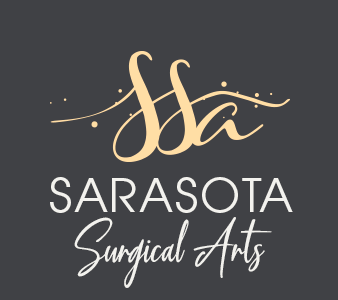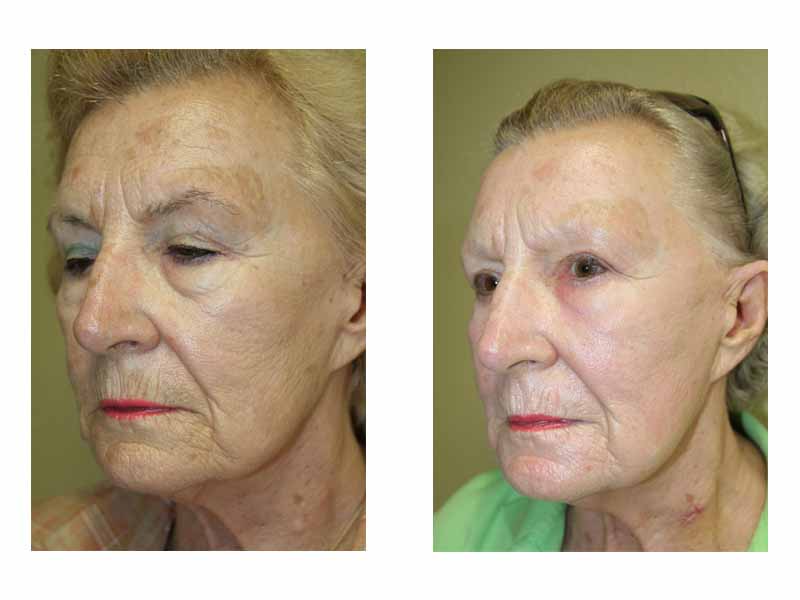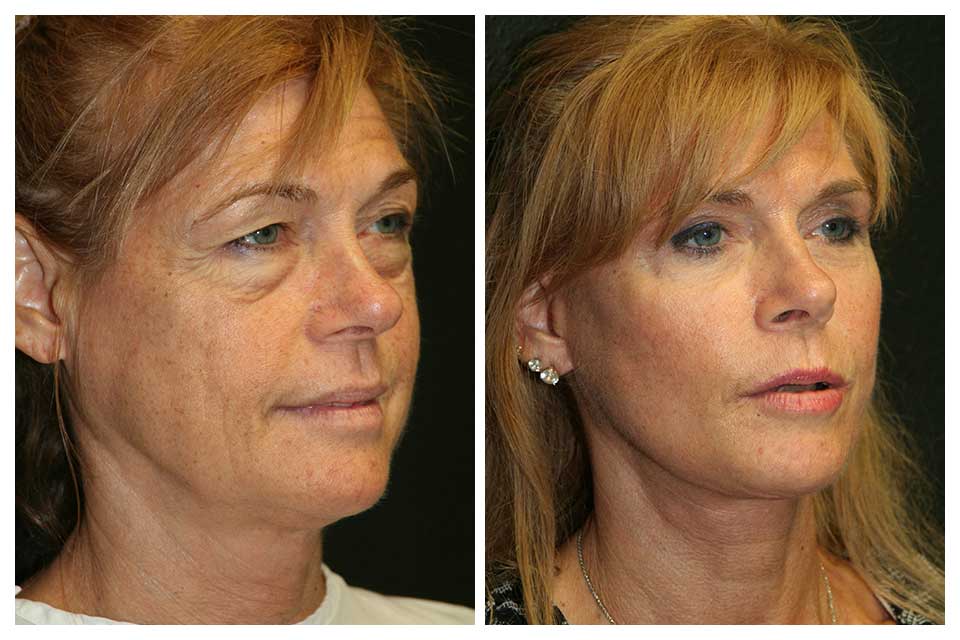Non-Surgical Treatment For Jowls
Non-surgical procedures do provide jowl treatment avenues, particularly for patients seeing the beginnings of jowl formation. These treatment options may help prevent jowls and minimally reduce the appearance of jowls. Patients with already pronounced jowls will likely benefit more from surgical correction.
Skincare Products
Topical skin products can help prevent all-around aging and maintain good quality skin. While it cannot provide dramatic skin tightening results, products such as retinol and sunscreen go a long way in preventing sagging skin. Following a good routine catered to their unique skin type and needs is an excellent way for patients to treat and prevent jowl formation.
Hyaluronic Acid Filler
Dermal fillers—in particular hyaluronic acid fillers—can help disguise the early appearance of jowls. The exact filler treatments may vary based on anatomy but may involve chin filler, jaw filler, or even cheek filler. Considering that facial fat loss is one of the uncontrollable factors that contribute to getting jowls, adding volume with fillers is a great way to keep the face looking young and the skin tighter so that jowls do not form.
Occasionally, semi-permanent fillers may be used, but this is less common for treating jowls. Though, for patients who experienced major facial thinning that has affected their entire face, fillers like Sculptra or Radiesse may be possible treatments.
Botox
Botox injections are generally associated with the upper face. However, a treatment known as the Nefertiti lift can help reduce neck bands. In some cases, they may also improve the appearance of the jowls. Additionally, sometimes masseter Botox injections can help thin the jawline when the masseter muscle makes it appear bulky. In combination with other treatments, this may help reduce the appearance of sagging jowls.
Kybella
Kybella is an injectable that dissolves fat. It most commonly addresses the area underneath the chin and the neck. Sometimes using Kybella to dissolve some of the fat under the chin and around the jowl area can help treat the jowls. It is helpful when patients are just beginning to see jowls form.
Microneedling
Microneedling is a skin procedure that makes small punctures in the skin and produces a collagen response. This helps increase the amount of collagen present, tighten the skin, and address several other signs of aging. When combined with radiofrequency, it can reach deeper layers of the skin for further correction. Similar procedures such as chemical peels may also help treat jowling.
Laser Resurfacing
Laser resurfacing—either surgical or non-surgical—is a great way to help tighten and rejuvenate the skin. It removes all or parts of the upper layers of skin to force healing and new collagen. When performed on skin beginning to lose laxity, it can help tighten it. Both surgical and non-surgical laser treatment can effectively treat sagging jowls.







